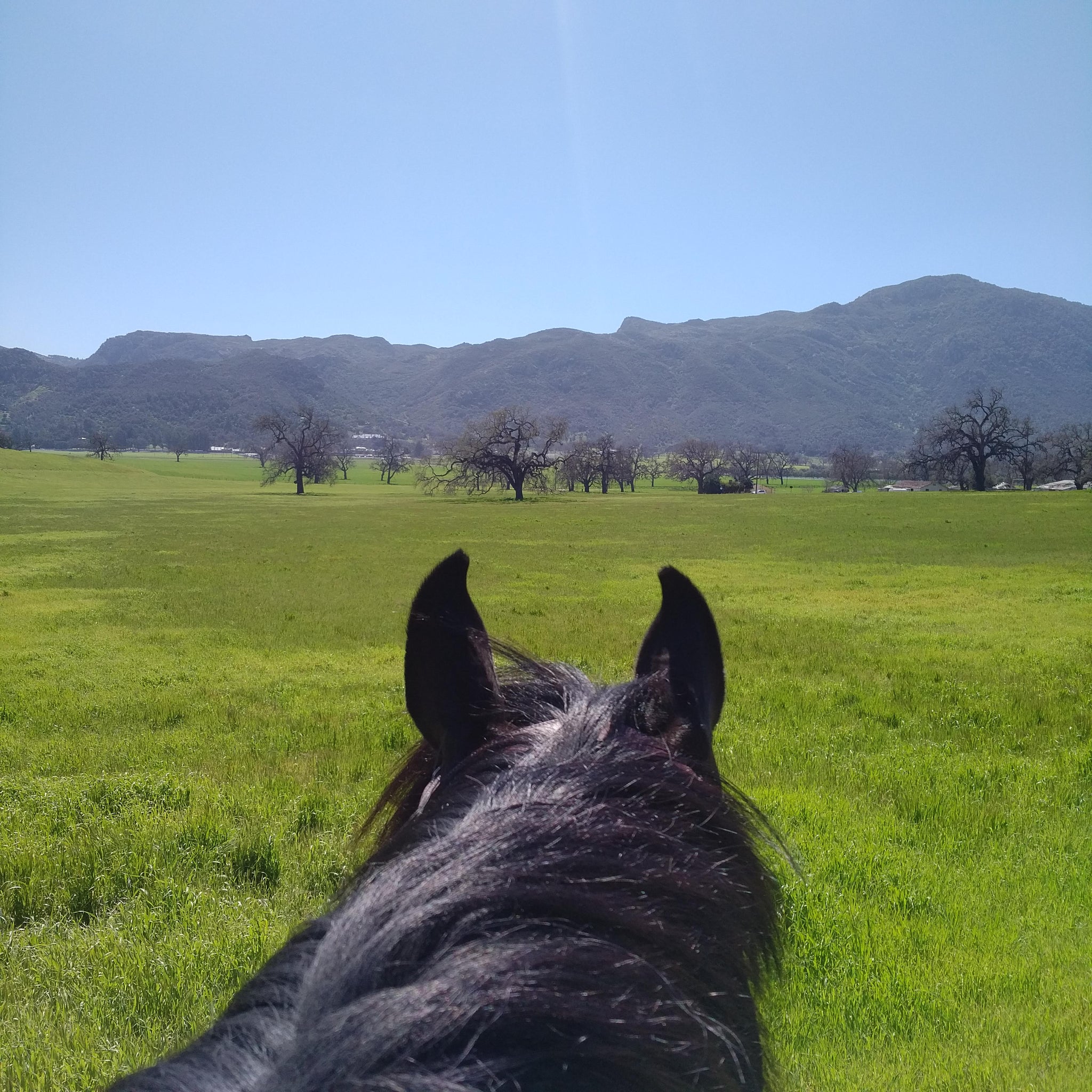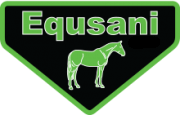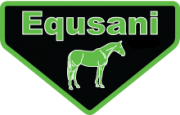
What Are Gastric Ulcers In Horses
Many horse owners, including myself, have experienced when our horse feel discomfort but few realize that studies have shown that it is a very common problem. Studies have shown that more than 75% of sport horses and 50% of leisure horses can suffer from gastric ulcers.
What is Gastritis in Horses?
The general term used to describe inflammation and/or irritation of the stomach lining is Gastritis and is simply a condition caused by an underlying disease.
Most horse people would think that their horse has a gastric ulcer (a stage of gastritis), a term commonly used to describe lesions in the stomach lining. That’s somewhat accurate, as gastritis may be associated with ulcers, a prevalent problem in the performance horse. But what most horse people don’t know is that there are two different kinds of gastric ulcers — and you need treat them differently. Ulcers may affect either the upper squamous region or the lower glandular region of the equine stomach. The regions function very differently, so it’s critical to distinguish between squamous ulceration and glandular ulceration.
What is Gastric Ulcer Syndrome?
In order to treat it effectively, it’s important to understand the overall scope of the problem. First, a gastric ulcer isn’t a disease. It simply refers to a lesion or lesions, which, like gastritis, are also part of a syndrome, or a collection of condition. All of these symptoms can be lumped together under one parent term used to describe ulcers caused by a more specific underlying disease: Equine Gastric Ulcer Syndrome.
Most horse people are familiar with the concept of gastric ulcers. Many trainers and barn managers keep a tube of omeprazole on hand at all times to suppress the production of gastric acid in a horse they suspect may have gastric ulcers. And sometimes, it helps. But it’s crucial to know what type of ulcer you’re dealing with in order to treat it effectively. Alternatively, there are some new natural great products that can aid the stomach acid levels.
How to Diagnose Gastric Ulcers in Horses
The only way to know for sure that your horse is suffering from a gastric ulcer is to have a vet perform a gastroscopy. Scoping is the best way for your veterinarian to accurately diagnose the presence and severity of ulceration in the stomach and if conditions allow, proximal duodenum. However, keep in mind there could be additional conditions at play such as parasites or hind gut disease that gastroscopy can’t rule out.
Squamous Gastric Ulcers (ESGUS) in Horses
Equine Squamous Gastric Ulcer Syndrome refers to ulcerative lesions specifically affecting the squamous portion of the equine stomach, or roughly, the upper third of the stomach. An ulcer in the squamous region is believed to occur when the mucosal lining becomes damaged, likely by bacteria, parasites or a constant barrage of stomach acid. The squamous region is particularly susceptible to damage as it lacks the protective mechanisms of the glandular region to defend its mucosal lining from gastric acid.
The horse can be suffering from ESGUS, where the lifestyle and diet fit the typical profile of a horse likely to develop squamous ulcers. These risk factors often include:
- Limited turnout
- Increased feed, especially grains
- Rigorous exercise
- Frequent travel
- Competition
- Intermittent feeding
Classic symptoms are loss of appetite, difficulty maintaining weight/weight loss, changes in hair coat, poor behavior, underperformance and wood chewing. If the horse is suffering from ESGUS, continuing a high-concentrate, low-roughage diet and intensive training schedule could make matters even worse.
Glandular Gastric Ulcers (EGGUS) in Horses
Glandular gastric ulceration (Equine Glandular Gastric Ulcer Syndrome) occurs less frequently than squamous gastric ulceration, but has been found to be more common than previously thought. The two regions function differently. Unlike the upper third of the stomach which is highly susceptible to damage from stomach acid, the glandular section of the stomach is relatively impervious to it. However, when factors occur which cause the integrity of the mucosal lining to deteriorate, its natural defensive mechanisms to gastric acid are also challenged – leading to the development of inflammation and lesions.
Scientists aren’t entirely sure what causes this breakdown. They theorize that high dosages or long-term use of non-steroidal anti-inflammatory drugs (NSAIDs), such as Bute, may reduce the blood supply to the lining and so contribute. It has also been suggested that, similar to human gastric ulceration, a bacterial infection may also be at play. Despite ongoing investigation, though, that theory has yet to be confirmed.
Again, the symptoms of EGGUS are consistent with other symptoms — and also with those of ESGUS. But because EGGUS doesn’t respond to the same treatment methods as ESGUS, you can’t simply dose a horse up with omeprazole and assume he’ll recover.
Once an endoscopy has determined whether your horse has ESGUS, EGGUS – or both – it’s time for your next test: checking to see if he has colonic ulcers.
Gastric Ulcers May Be Accompanied by Hind gut Ulcers
By now it should be clear that you need to have a vet diagnose not only the presence of gastric ulceration, but the specific type of gastric ulcer or ulcers your horse could be suffering from before you can select an appropriate and effective treatment plan.
Gastric and colonic ulcers frequently go hand-in-hand, with cases of up to 54% colonic ulcers — or ulcers in the hind gut — are a little more difficult to diagnose and they have several possible causes, ranging from overuse of NSAIDs, parasite burden, or hind gut acidosis usually as a result of too much grain feed. Many of the warning signs for colonic ulcers are similar to those signifying possible gastric ulcers, including:
- Weight loss
- Resistance under saddle
- Irritability and other changes in attitude
- Lack of energy and stamina
- Loss of appetite
- Behavior indicating discomfort around the flanks, often characterized by a dislike of
- brushing/blanketing
- Low-grade anemia
Diarrhea, intermittent or acute, and recurrent mild colic episodes signal a clear hind gut problem, and absolutely warrant further investigation to determine if colonic ulcers are present.
Although EGGUS, ESGUS and colonic ulcers all may present in similar ways, the treatment for each is different — so it’s critical to know what all you’re dealing with, and how to prevent it in the future. And keep in mind there is no direct correlation between the development of ESGUS, EGGUS, or colonic ulcers.
Risk Factors for Developing Equine Gastric Ulcer Syndrome
Despite much study and the high prevalence of stomach ulcers in horses, the definitive reasons why some horses are more susceptible to developing lesions than others are still largely unknown. We do know, however, that squamous and glandular ulcers do seem to develop in response to different risk factors.
Luckily there exists natural and often preventative products, minimizing the risks of developing equine gastric ulcer syndrome.
ESGUS
Multiple studies have shown risk factors that accompany squamous ulceration in horses. These include:
- Rigorous training in some performance horses (but not always)
- Limited turnout
- Diet or routine change
- Grain-based feeds
- Limited forage
- Intermittent feeding
- Travel and competition
In particular, commencement of training and management changes, diets high in concentrates and low in roughage, and intensive exercise can result in the development of ulceration in as little as seven days. However, other studies have shown that gastric ulcers can affect horses indiscriminately – including those not in work and even those out at pasture.
EGGUS
Risk factors linked to glandular ulceration in one study included:
- NSAID use, such as Bute, given at doses 50 percent higher than recommended, and used long-term
- Limited turnout
- Horses not fed haylage
- Horses fed unprocessed grain
- Horses infrequently fed a complete diet
- Fast exercise on fewer days of the week
However, it is important to remember that EGGUS can present regardless of intensity of exercise, or even in a horse that isn’t frequently exercised.
Treating Gastric Ulcers in Horse: Is it Squamous or Glandular?
You’ll need to work with your vet to come up with a thorough treatment plan for a horse you suspect (or have confirmed) has ulcers of any type. But most vets will prescribe some combination of the following.
For ESGUS:
- A nutritional digestive supplement.
- Omeprazole to suppress production of gastric acid and give the tissue time to heal and prompt the horse to eat (further suppressing the effect of excess stomach acid as a short-term aid but not recommended long term).
- Ranitidine or Cimetidine, to help suppress gastric acidity.
- Antacids, for short-term control.
- Mucosal protectants, to form a physical barrier between stomach and acid.
A high-roughage, low-concentrate diet.
- Removal of horse from heavy work or competition schedule.
For EGGUS:
- Omeprazole, a treatment that suppresses gastric acid production to allow healing to take place, particularly in the squamous region. While it has been shown to be less effective for treating glandular ulcers, most vets still recommend it as an aid for some healing. However, it would likely be prescribed in higher doses for longer and used in tandem with additional treatments. Be aware of possible side effect with long-term use though as studies in humans have shown negative side effects.
- Mucosal protectants, such as sulcrafate or pectin-lecithin. These are recommended for use along with omeprazole to aid healing in glandular ulceration.
- Antibiotics, because bacteria may be a cause of some EGGUS.
- A nutritional digestive supplement to support healthy gut structure and function, especially of the hindgut while suppressing stomach acids.
- A high-roughage, low-concentrate diet.
As you can tell from the above, it’s hard to pinpoint the exact cause behind any type of ulcer, so it can be tricky to treat. But one thing is clear from the research: horses with limited turnout and a diet high in processed feeds/low in forage are more prone to developing ulcers. Often, these factors correlate with the types of horses in heavy work or experiencing frequent travel and competition. That may also play a role. But the way we feed horses almost definitely affects their likelihood of developing ulcers of any types.
Preventing Gastric Ulcers in Horses
As always with health and wellness, prevention is the best medicine. We stress horses’ digestive systems simply by owning them and removing them from their natural environment. Then we further compound the difficulties by riding, traveling, and competing. It’s therefore critical, especially for the performance horse, to take as many measures as possible to encourage better digestive health. In these situations, a nutritional digestive supplement is often recommended by veterinarians.
We stress horses’ digestive systems simply by owning them and removing them from their natural environment. Then we further compound the difficulties by riding, traveling, and competing
The most beneficial changes to your feed and management program may include:
- Providing as much turnout as possible with other horses
- Offering forage (quality hay or grass) continuously around the clock
- Feeding alfalfa, which is shown to help buffer stomach acids
- Reducing grain-based feed intake
- Providing fats as a source of energy/calories
- Feeding multiple small meals throughout the day (at least 3-4)
- Mixing chaff with grain meals to increase chewing and slow intake
- Using hay nets or slow feeders to increase chewing and slow intake
- Feeding beet pulp, a complex carbohydrate metabolized in the hindgut, for higher caloric needs
In addition to these, and especially when it’s not possible to implement them all, digestive supplements can also play a role in supporting your horse’s gut health. Certain digestive supplements can help:
- Minimize the amount of grain (simple carbohydrates) reaching the hindgut, through both moderating the transit rate and enhancing nutrient uptake within the small intestine. This may also reduce the total amount of grain required to maintain body weight and athletic performance.
- Provide the nutrients to strengthen, repair and replenish the lining of the gut wall (both stomach and hindgut).
- Help normalize the intestinal flora, eliminating an excess of pathogenic bacteria and subsequent endotoxins they produce.
- Enhance the immune system for self-repair.
Good management and digestive support are essential to both preventing ulcers in horses and aiding recovery when they’ve already occurred. By prioritizing your horse’s digestive health with smart management, you can ensure that your horse is a member of the healthy performance horse minority who are free of gastric ulcers.







